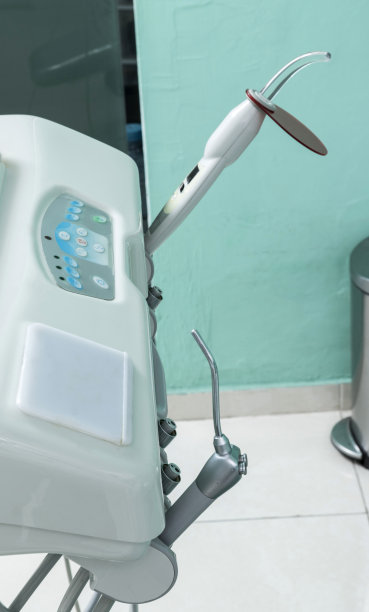Navigating the Journey of Wisdom Teeth Removal for a Healthier Smile and Enhanced Oral Wellness
Summary: Understanding the intricate journey of wisdom teeth removal is crucial for achieving better oral health and a brighter smile. This article details the reasons for extraction, preparation steps, the removal process, and the post-operative care needed for optimal recovery. Through careful navigation of this journey, patients can minimize discomfort and ensure enhanced oral wellness. By learning about these key aspects, individuals can approach wisdom teeth removal with confidence and awareness, paving the way for a healthier, happier smile.
1. Understanding the Need for Wisdom Tooth Extraction

Wisdom teeth, also known as third molars, typically emerge in late adolescence or early adulthood. While some individuals may comfortably accommodate these teeth, many face complications related to crowding and impaction. An impacted tooth occurs when it fails to fully emerge through the gums, often leading to pain, swelling, and even infection.
Furthermore, the roots of wisdom teeth can grow at odd angles, damaging the surrounding teeth and jawbone. Dentists often recommend the removal of wisdom teeth not only to prevent these potential issues but also to promote overall dental health. Keeping an eye on the development of wisdom teeth through regular dental check-ups is essential for determining the right course of action.
In summary, the extraction of wisdom teeth is typically advised to alleviate discomfort, prevent potential dental issues, and maintain optimal oral health. Making informed decisions regarding the need for extraction ultimately enhances the likelihood of a healthy smile.
2. Preparing for the Wisdom Tooth Procedure
Preparation for wisdom tooth removal begins with a comprehensive consultation with your dentist or oral surgeon. During this visit, the dentist may conduct an X-ray to assess the positioning and health of the teeth and surrounding tissues. They will also discuss your medical history and any underlying conditions that might affect the procedure.
Patients should also consider their personal comfort levels regarding anesthesia. Options typically include local anesthesia, sedation, or general anesthesia, depending on the complexity of the extraction and individual preferences. Discussing these options thoroughly ensures a customized approach, catering to the patients specific needs.
Additionally, anticipating the post-operative recovery phase is vital. Patients should arrange for someone to offer transportation on the day of the procedure since the administered anesthesia may impair their ability to drive. Planning an adequate recovery period, ideally a few days off work or school, ensures a smoother healing process.
3. The Wisdom Tooth Removal Process Explained
The extraction procedure usually takes about 45 minutes to an hour, depending on the complexity of the case. The dentist begins by administering the chosen anesthesia, ensuring the patient remains pain-free throughout the process. Once the area is numb, the dentist carefully makes incisions in the gum tissue to access the tooth.
A dentist will typically remove the wisdom tooth in pieces if it is impacted, helping to minimize potential trauma to surrounding tissues. After the tooth is removed, the dentist cleans the extraction site and often places stitches to promote healing. Its a straightforward procedure, but the expertise of the oral surgeon ensures it is completed safely and effectively.
Patients may experience varying levels of discomfort during and after the procedure, but effective pain management techniques are available. Ice packs, prescribed medications, and pain relief options can significantly contribute to a more comfortable recovery experience. Understanding the process helps minimize anxiety and sets realistic expectations for the procedure.
4. Post-operative Care for Optimal Recovery
Following wisdom tooth extraction, adhering to post-operative care instructions is critical for a smooth recovery. Initially, patients should rest and avoid strenuous activities for the first few days after surgery. Ice packs can aid in reducing swelling and discomfort during this recovery phase.
Diet plays an essential role in recovery as well. Initially, soft foods such as yogurt, mashed potatoes, and smoothies are recommended to avoid any irritation to the extraction site. Over time, patients can gradually reintroduce solid foods as comfort permits, ensuring they maintain proper nutrition throughout the healing process.
Moreover, maintaining oral hygiene is vital yet requires some adjustments post-surgery. Patients should avoid rinsing their mouths vigorously for the first 24 hours and refrain from using a straw, which can dislodge the blood clot and lead to complications like dry socket. Following these carefully tailored care instructions will facilitate oral wellness and ensure a quick return to daily activities.
Summary:
Navigating the journey of wisdom teeth removal is a critical step toward ensuring a healthier smile and long-term dental wellness. From understanding the need for extraction to following post-operative care guidelines, each aspect plays a vital role in the overall experience. Embracing this journey with informed decisions empowers individuals to achieve not only a pain-free recovery but also a lasting improvement in their oral health.
This article is compiled by Vickong Dental and the content is for reference only.



